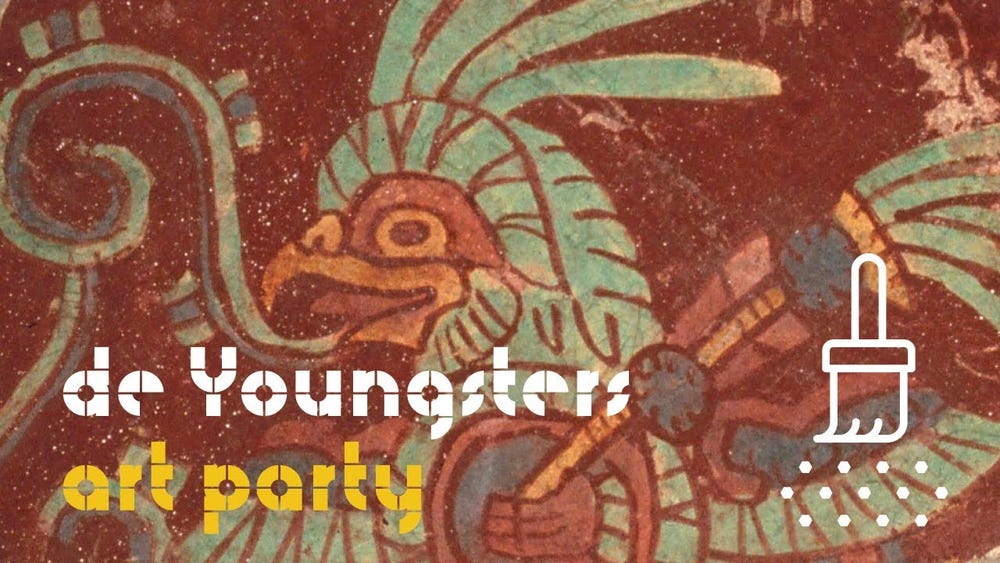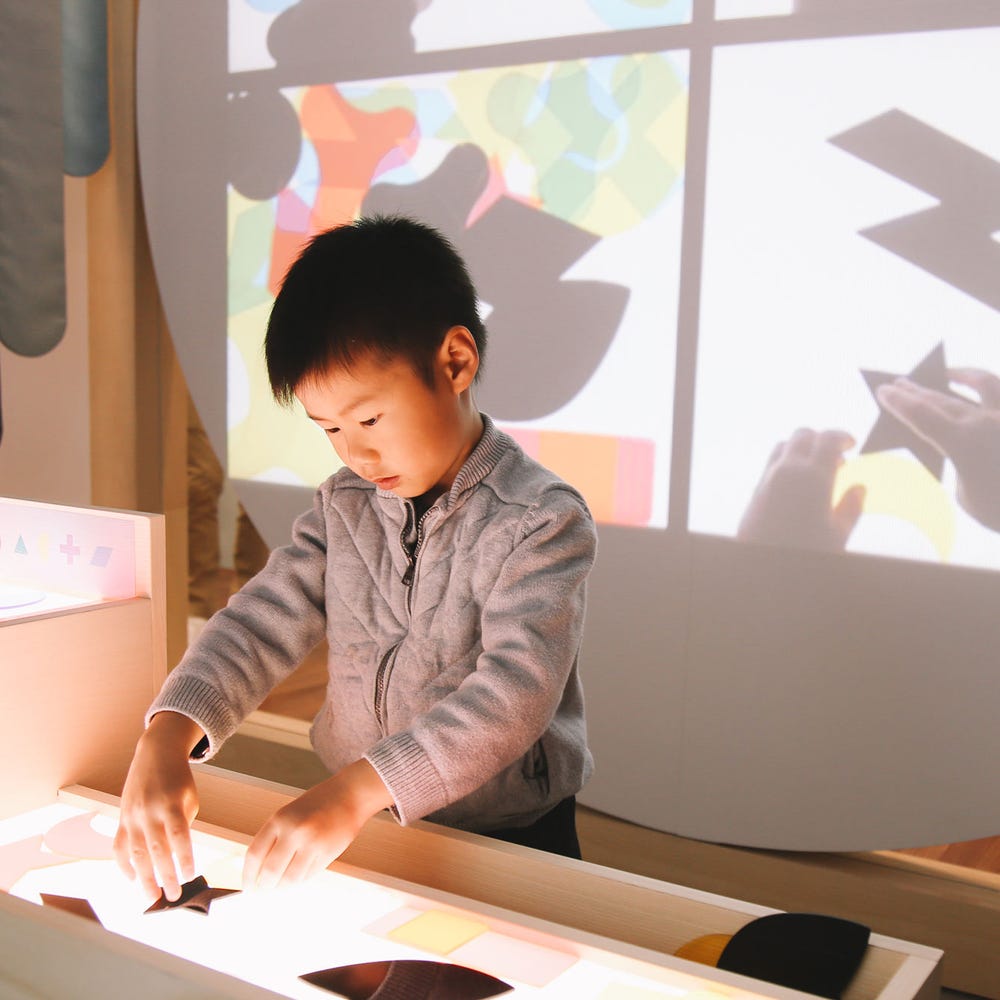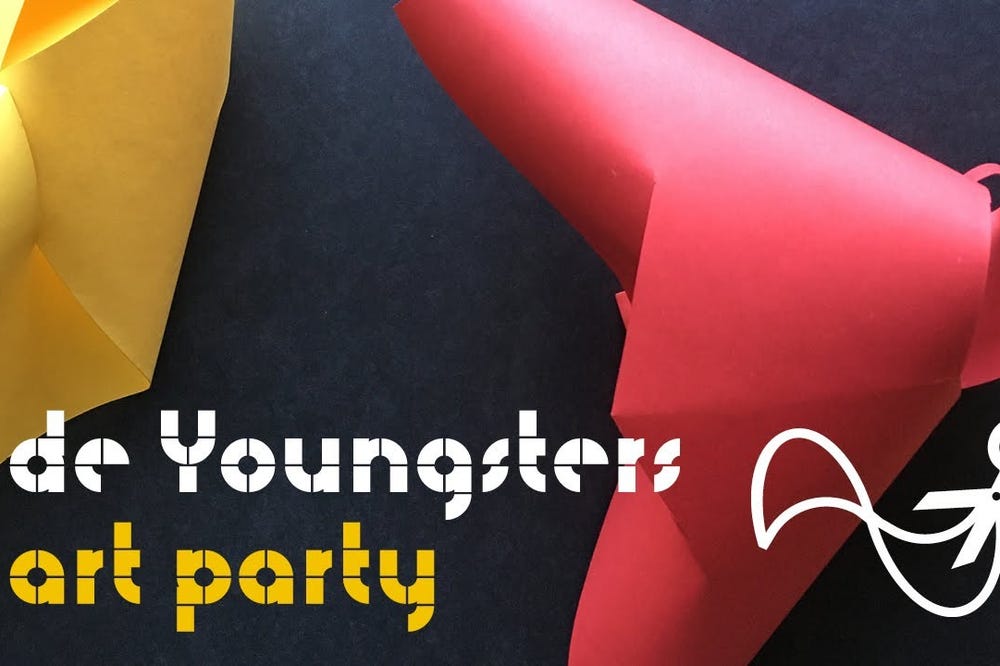de Youngsters Art Party: Blend the Rules
By Hannah Freeman, senior teaching artist
January 25, 2021
Drawing inspiration from Mural Fragment with Warrior Bird (400–600 CE), Jacob Lawrence’s Migration (1947), and Ed Ruscha’s Pepto - Caviar Hollywood (1970), young artists will learn the basics of paint making, following and creating recipes with different pigments and binders. With an emphasis on exploration and discovery, children can think out of the box by considering unorthodox materials, gaining a broader appreciation of the genesis of color, color application, and color creativity.
Materials
- Chalk
- Plastic baggies
- Can of beans or rolling pin (mortar and pestle can be used if available)
- Glass jar
- Measuring spoon
- White glue
- Water
- Paintbrush
- Paper
- Optional: egg; selection of spices/foods for pigment (such as turmeric, smoked paprika, cumin, cocoa, etc.); tea; coffee; Pepto-Bismol
Questions to Consider
- Where does color come from?
- How do artists make paint?
- How can you make a painting without using paint?
Basic recipe: Pigment + Binder = Paint
Steps
1. Break up a stick of chalk into small pieces and put inside a plastic baggie. Use the end of a can of beans or rolling pin and firmly press down repeatedly against the chalk, grinding it into a fine powder. This powder is your pigment. (Alternately, you can grind the chalk to a powder using a mortar and pestle if available.)
2. In a glass jar, measure a tablespoon of white glue and a tablespoon of water and mix with a paintbrush to make your binder. Add the chalk pigment and mix thoroughly to make your paint. You can use it straight away, but if you allow time (at least 1 hour) for the pigment to dissolve, the paint color will be stronger.
3. Explore different ways of applying your paint to the paper. You can paint a large area in solid color, or create interesting marks by dotting or swirling your brush. Try using just the tip of the paintbrush, then gently press the brush head flat onto the paper and carefully pull to create more marks.
4. How about making egg tempera paint? Instead of using white glue, substitute an egg yolk; this binder results in a lovely luminous finish that becomes more noticeable as you build up more layers of paint. Be sure to let each paint layer dry completely before adding the next.
5. Consider using spices or other powdered foods as pigments. Turmeric, smoked paprika, and cocoa have satisfying results—what else could you try? You might want to create a swatch page, painting a small area of color, then writing which pigment and binder you used, to record your paint recipes.
6. Experiment like artist Ed Ruscha and paint with Pepto-Bismol, or use strong coffee or tea. These work especially well when you apply multiple layers. What works best: adding layers quickly or allowing time for them to dry between each application? Discover how the thin consistency of coffee or tea lends itself to the application of drops across the page; direct streams of coffee/tea by tilting the paper; gently blow your breath across small pools of coffee/tea on the paper.
Have fun painting on the paper from the Art Box! These painted papers can be used later in the week for the Paper. Is. So. Not. Boring, Pieces of Me, and Out-of-the-Box Landscape video art projects.
Reflect
- After creating your paints, consider the following questions:
- What pigments did you discover?
- Which different ways did you apply the paint?
- What was your favorite paint recipe and why?
- How would you explain this project to a friend?
Share
We would love to see what you create! Tag us on any social media platform with #deyoungsters or email us your creations at specialevents@famsf.org.


